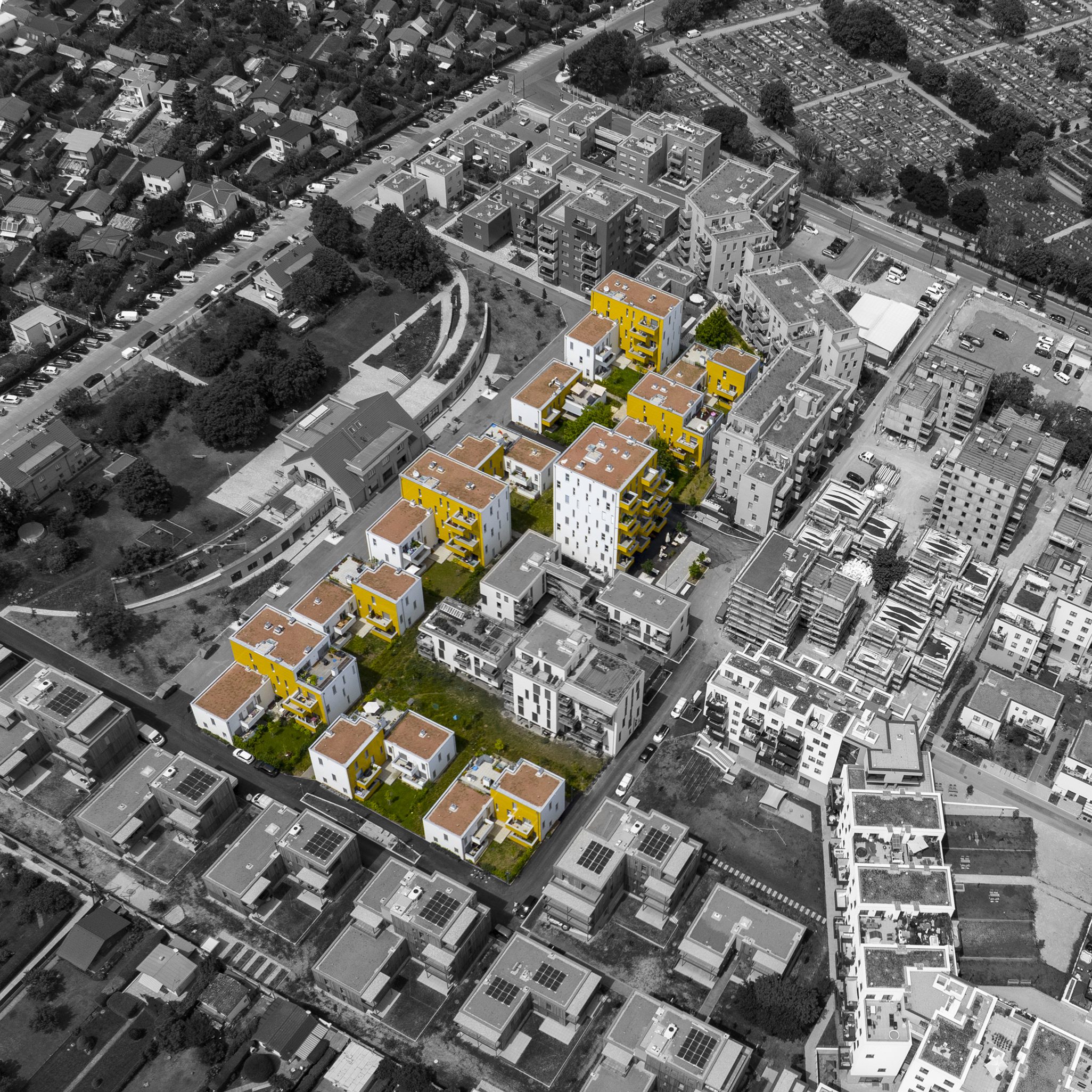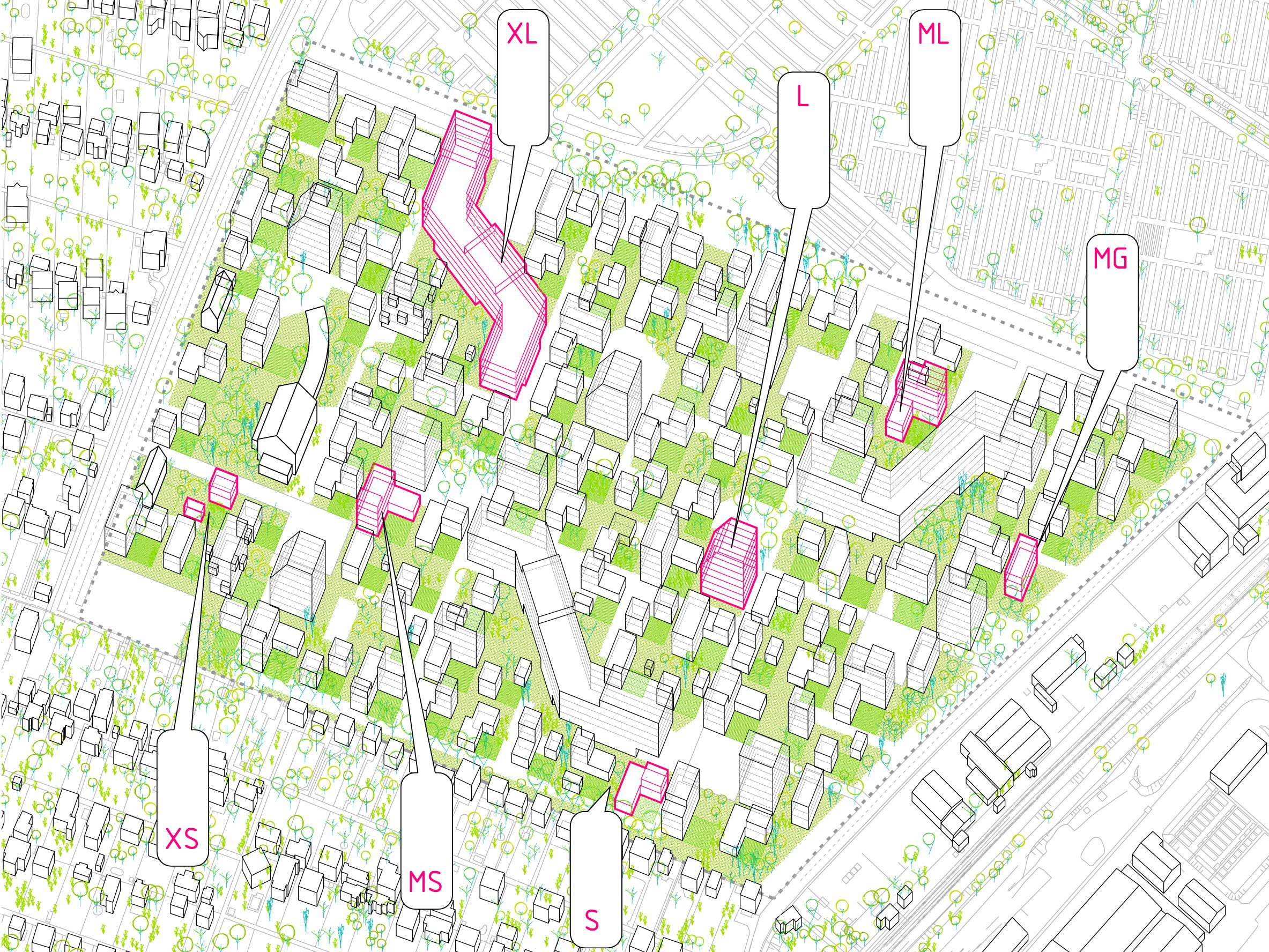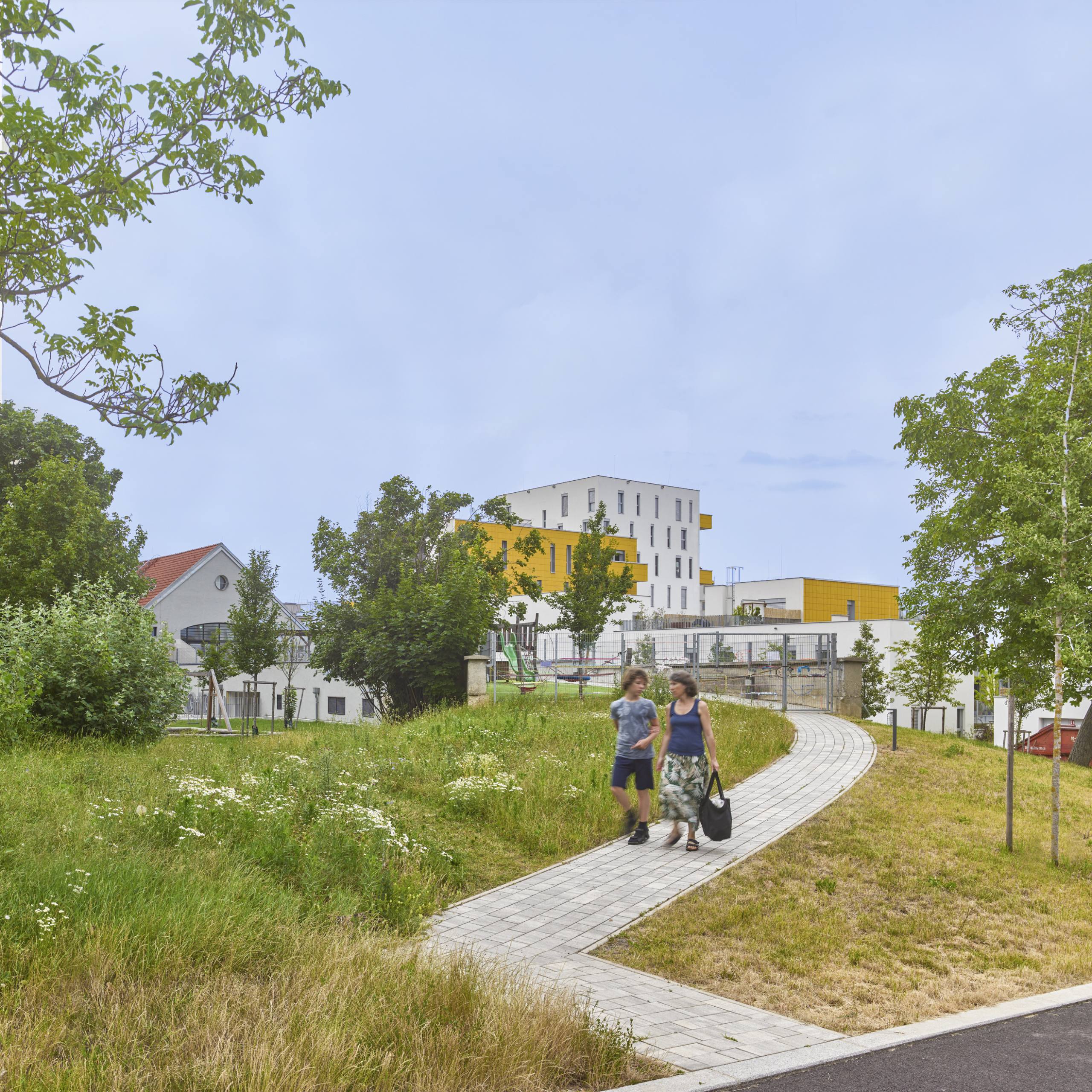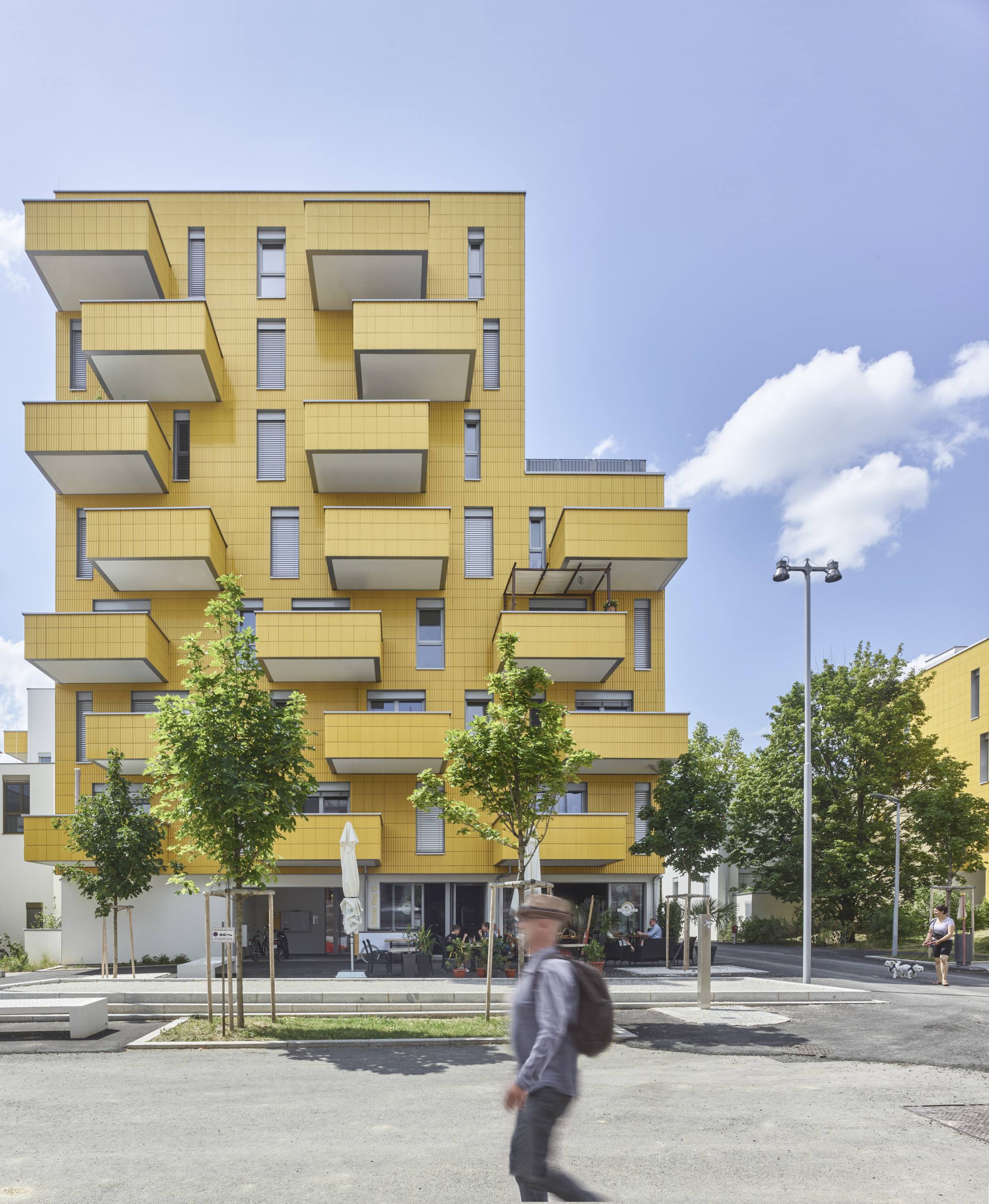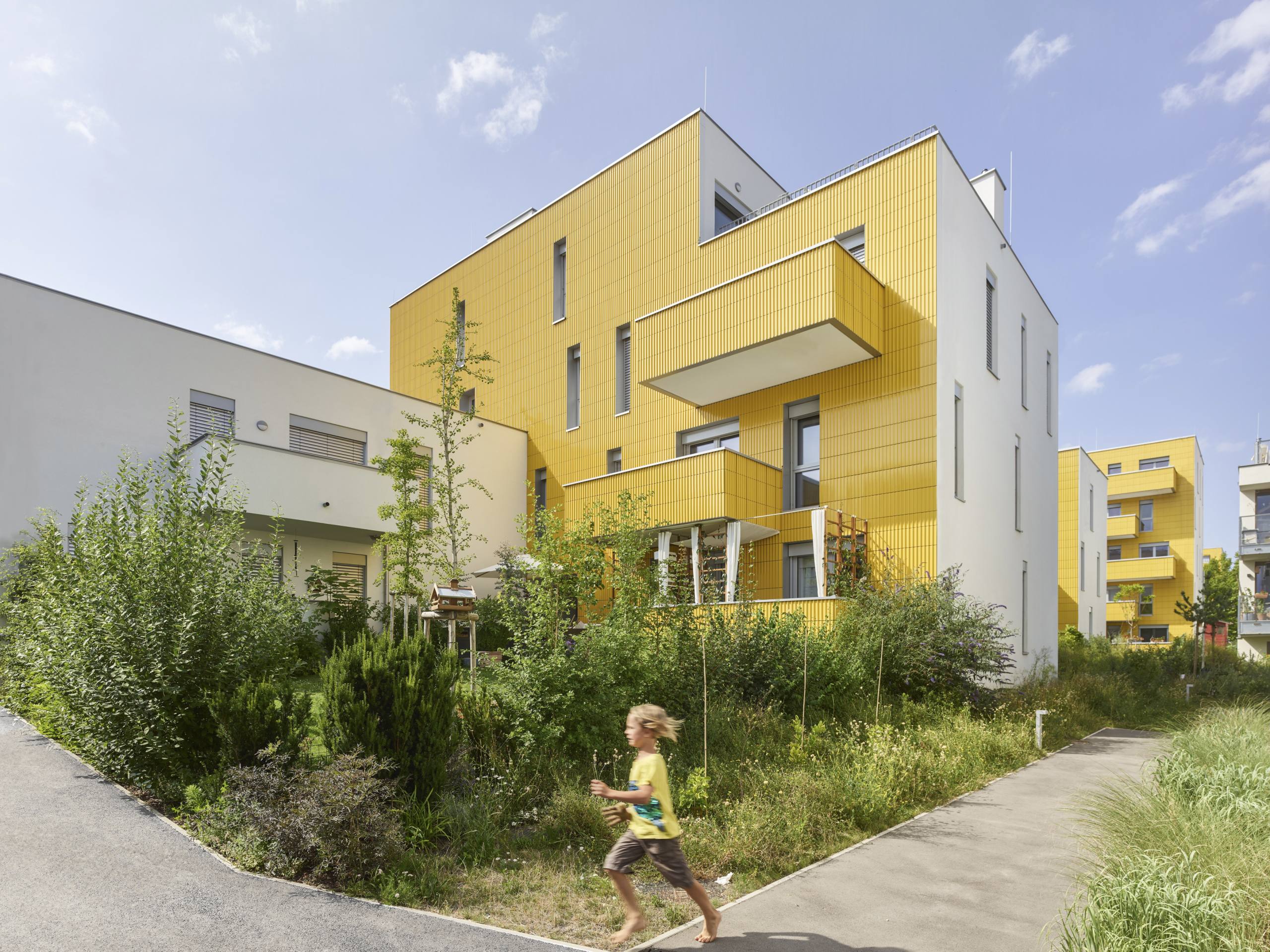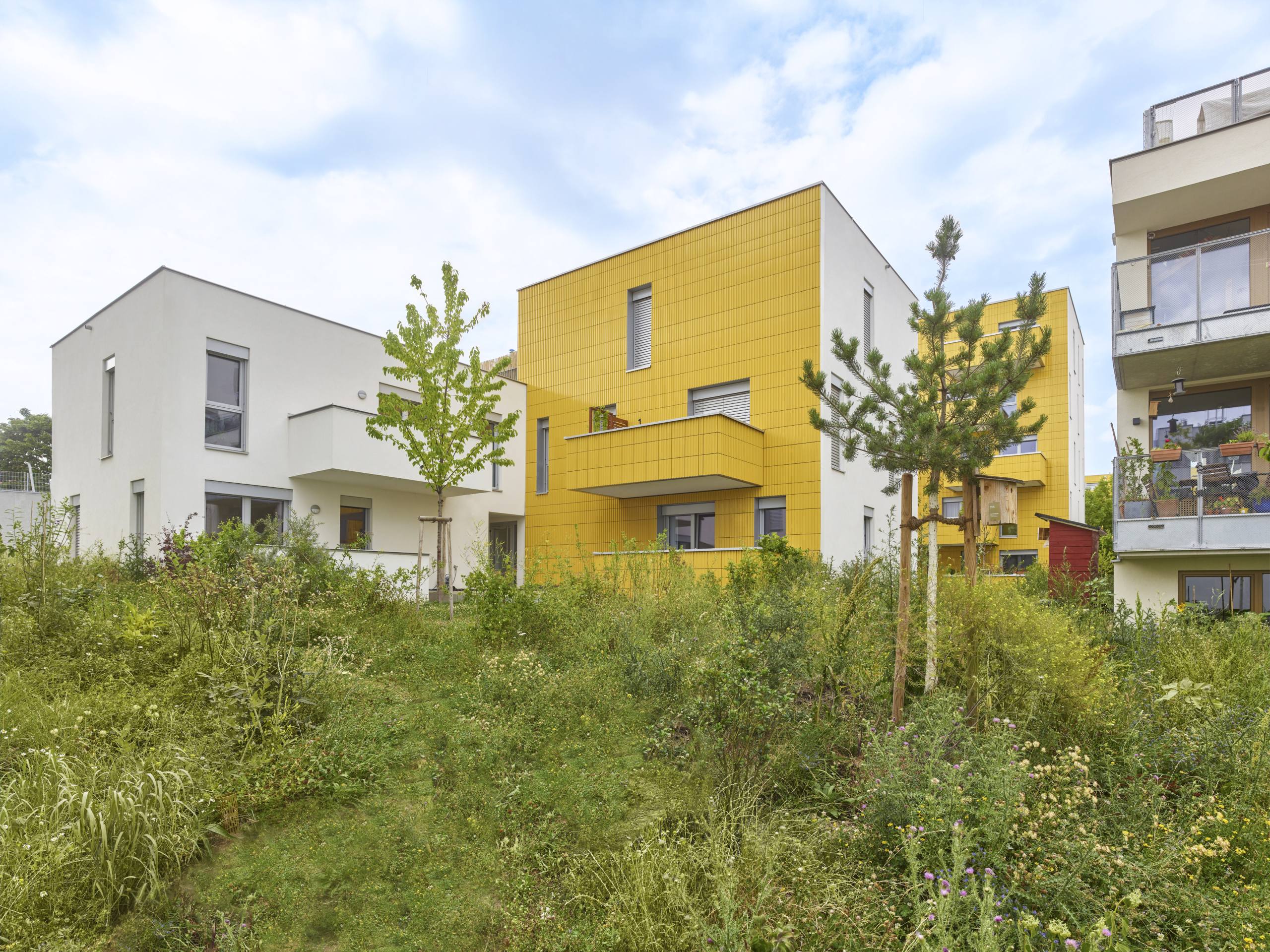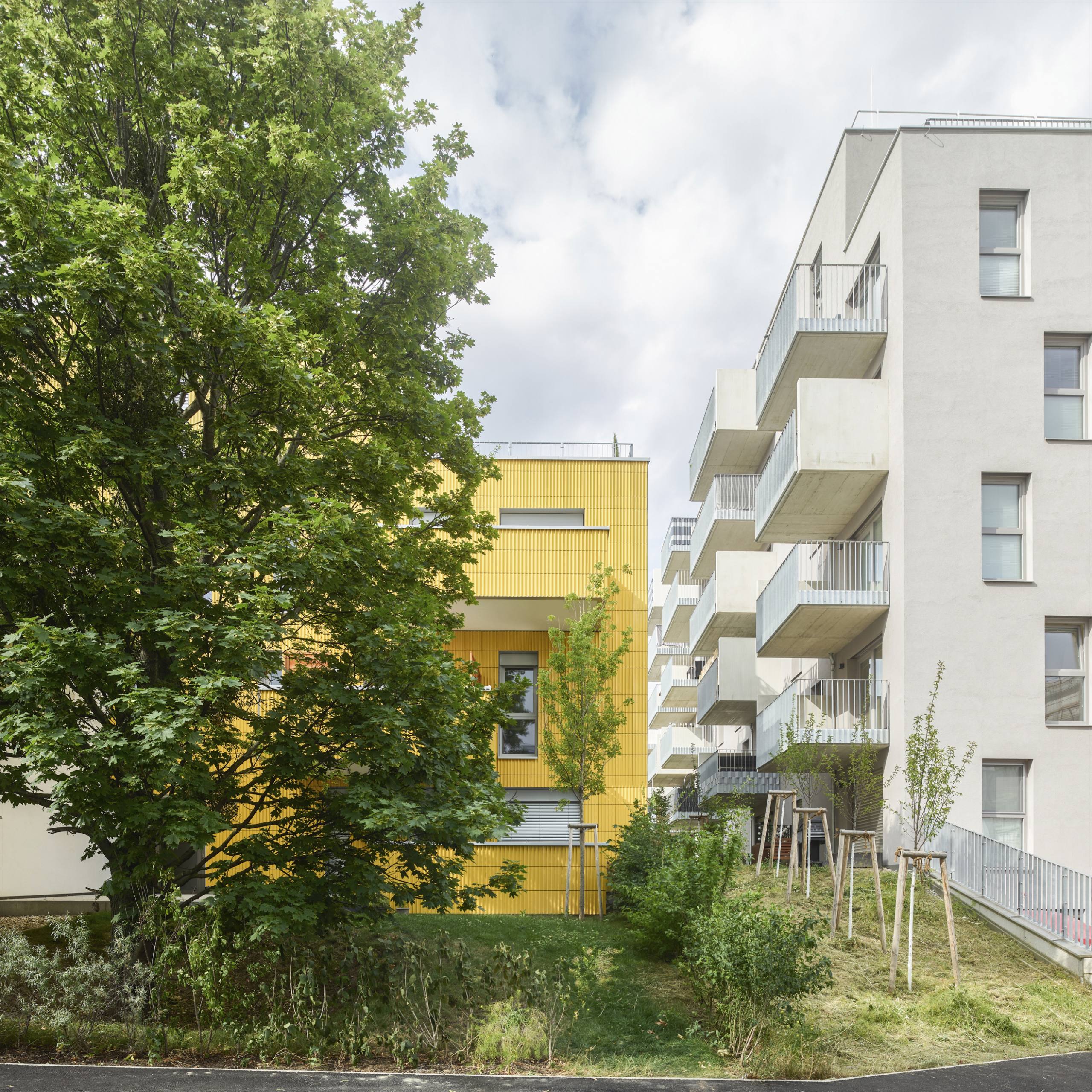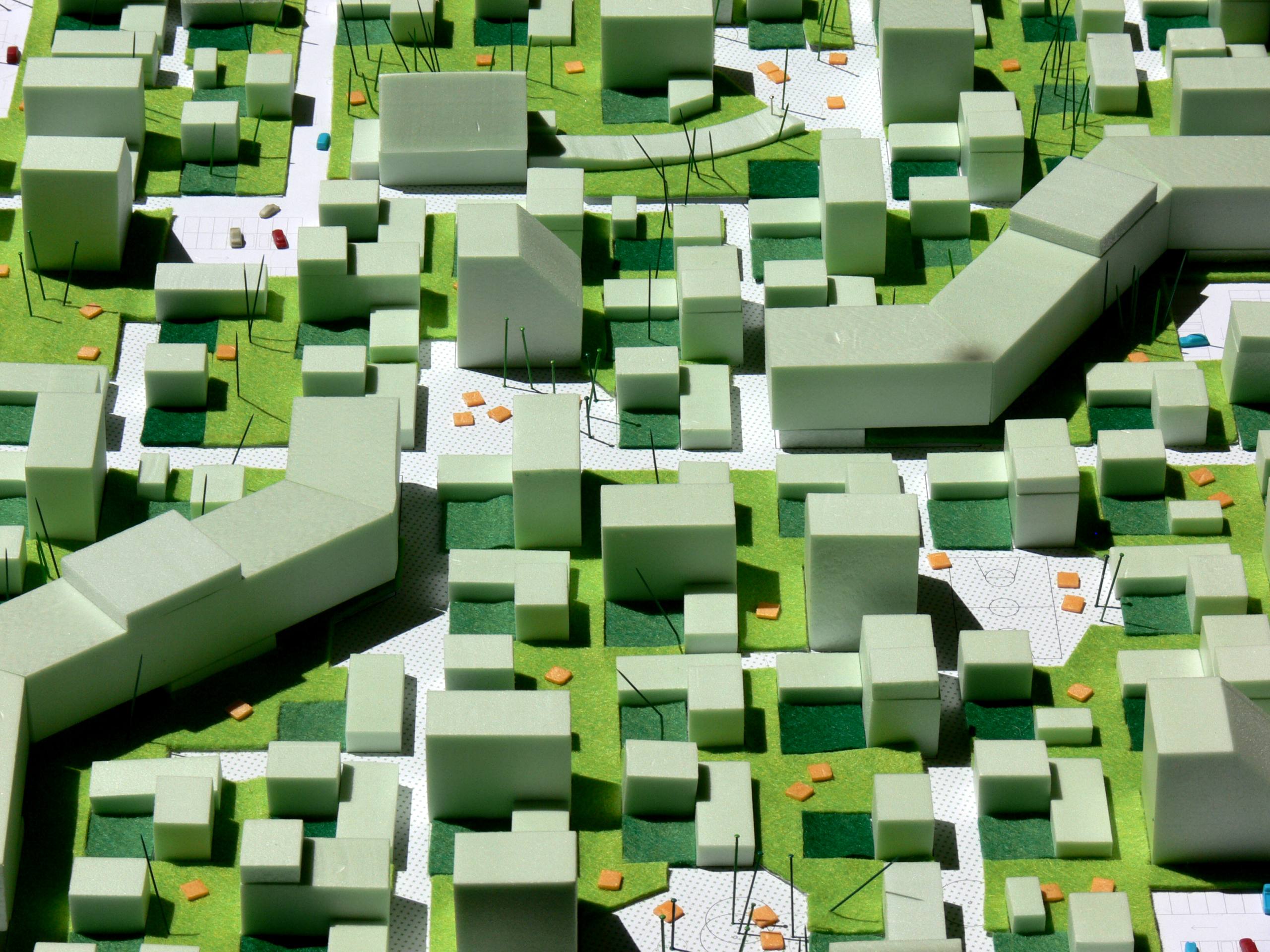Sonnenblumenhäuser/
Arenas Basabe Palacios
Project Details

Location(City/Country):
Vienna / Austria
Tipology:
Residential
Year (Design/Construction):
- / 2022
Area (Net/Gross):
9500 m2 / -
Operational Carbon emissions (B6) kgCO2e/m2/y:
-
Embodied Carbon emissions (A1-A3) kgCO2e/m2:
-- Sustainable approach to localised living patterns.
- Residential units are designed to be flexible to ensure future use.
- Prioritises biophilic design.
Following the success of Arenas Basabe Palacios winning masterplan ‘Wildgarten’, the urbanisation of a new 10-hectare district in Emil-Behring-Weg (Meidling, Vienna) has begun. The landowner, ARE (Austrian Real Estate), commissioned multiple architecture teams and different sponsors to develop an edification design. In partnership with the Viennese enterprise for social housing and different cooperatives, a collaborative democratic and plural urbanism process was created.
Arenas Basabe Palacios was commissioned with the design and execution of 11 housing blocks in different scales, including 82 housing units with a total of 9500 m2 constructed surface containing community spaces, shared parking facilities for bicycles, and commercial spaces in the ground floor zone. In the foreseen urban tissue, the series of buildings joins different urban elements: a rehabilitated historic building transformed into a cultural centre, a grouping of cooperative housing units, an urban square with local suppliers and services, etc.
The “Allmende,” a wild/natural free space between the buildings, strengthens pedestrian connections and the continuity of local flora and fauna. Those characteristic green zones are low-maintenance and flexible to adapt to resident’s needs.
The design respects the original urban idea and furthermore creates new potential based on the garden-matrix, which is structuring the new district. Each block is constructed around its garden while edification varies in height, bay, and edification type. Buildings constructed to a small scale contain single-family housing and duplexes while medium- and high density buildings serve as collective housing blocks to develop a diverse and porous urban process.
The materiality of the buildings accentuates this idea: ceramic color facades are facing the sun, while all living spaces are south-orientated and opened towards the garden. A characteristic construction system with load-bearing walls of isolated ceramic blocks (‘Hochlochziegel’) defines the dwelling’s interiors with a sequence of neutral, flexible, and reconfigurable spaces.
The relationship with its built environment presents a sensitive balance of building scales, which guarantees good sunlight in all the interior rooms while the south-facing gardens and intermediate open spaces create a friendly transition with the adjoining architectures. The result is a residential fabric that is both unitary and diverse, with an architecture that reflects the urban/natural duality of the urban planning project, thus qualifying the entrance to the new Wildgarten neighbourhood.
Authors: Arenas Basabe Palacios arquitectos + Buschina & Partner ZT GmbH
Collaborators: Franca Sonntag, Lucía Leva, Miriam Alonso, Sai Ma, Anna Lindorfer
Landscape: Tomas Proksch (Land in Sicht)
Engineering: Buschina & Partner GmbH
TGA: Lakata GmbH
EPG: Elektroplanungsgesellschaft mbH
Fire protection planning: Erich Röhrer
Photographer: Kurt Hoerbst

